Key takeaways:
- An author platform is essential for building relationships and connecting with readers, transforming a marketing tool into a community hub.
- Creating engaging content requires authenticity, relatability, and visual elements to captivate and foster connections with the audience.
- Consistency in posting and nurturing an email subscriber list significantly enhances reader engagement and retention.
- Utilizing social media effectively through direct interaction and collaboration can expand reach and deepen audience engagement.
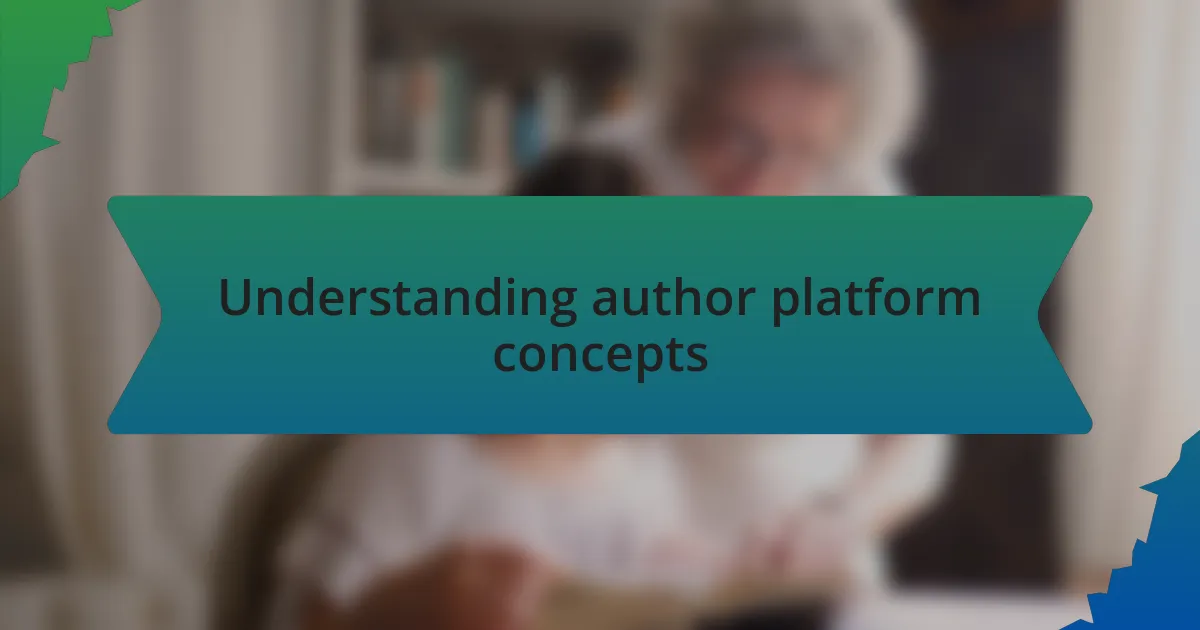
Understanding author platform concepts
An author platform is essentially your brand and how you connect with your audience. I remember the moment I realized I needed to establish mine—sitting in front of my laptop, pondering how to reach readers who would resonate with my stories. It hit me that a platform is more than just a marketing tool; it’s about building relationships.
When I started sharing my writing journey on social media, I was astonished by how quickly I was able to foster a community around my work. Have you ever felt that buzz when someone engages with your content? That connection transforms your platform from a simple portfolio to a vibrant hub where ideas and experiences can be exchanged.
While it may feel overwhelming to create this platform, it’s important to remember that it’s a gradual process. My early attempts were shaky, often filled with doubt and hesitation. But each small step—blog posts, newsletter updates, and social media interactions—built the foundation for a supportive network that encourages me to continue publishing.
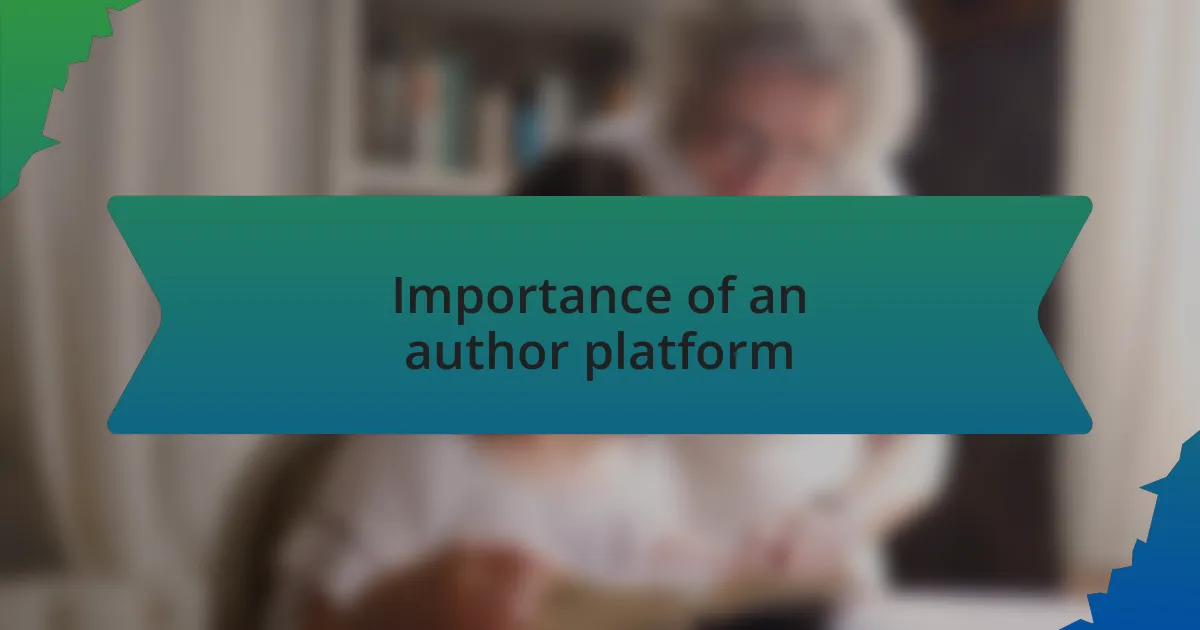
Importance of an author platform
Developing an author platform is crucial because it creates visibility for your work. I vividly remember the first time I received a message from a reader who discovered my book through a social media post. That moment solidified my belief in the power of platforms—they not only showcase our creations but also spark connections that fuel motivation and creativity.
Having a strong author platform can significantly impact your writing career. It serves as a launchpad for your books, allowing you to reach potential readers directly instead of relying solely on traditional marketing channels. Thinking back on my early days, I invested time in refining my online presence, and it paid off when an unexpected email from a literary agent led to fruitful discussions about my next project.
Moreover, an author platform provides a space for authentic engagement with your audience. Do you remember the excitement of receiving comments on a blog post or social media update? Those interactions remind us that our words resonate and have the potential to inspire. The relationships we cultivate through our platforms can open doors to collaborations and opportunities that might have otherwise remained out of reach.
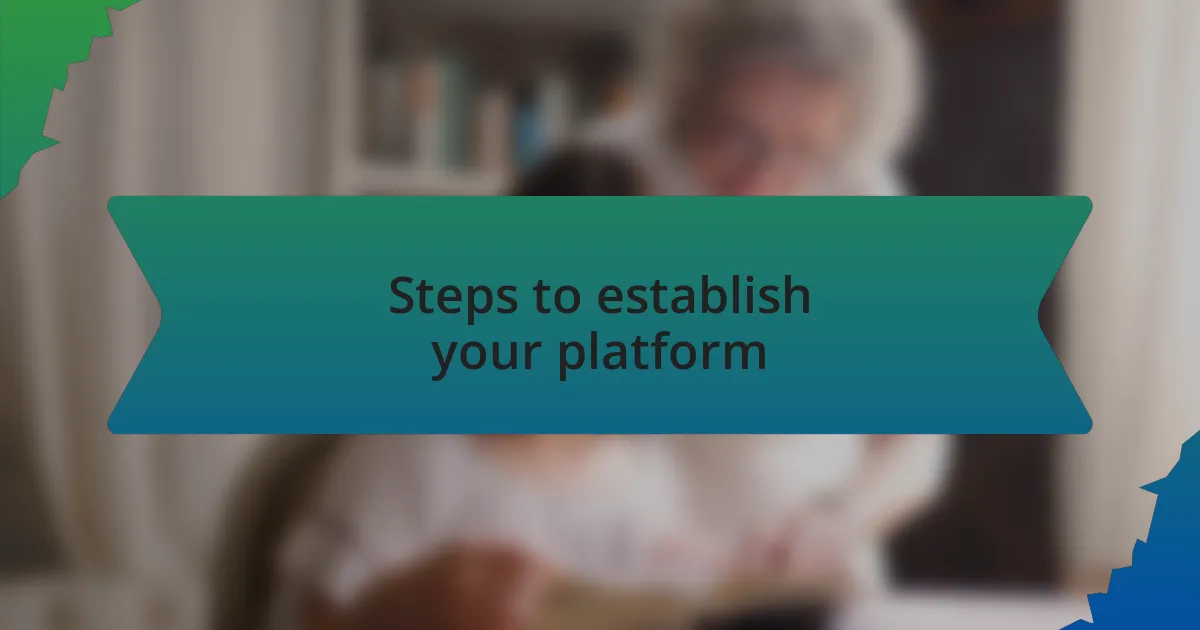
Steps to establish your platform
Once I decided to establish my author platform, the first step I took was to identify my niche. Early on, I realized that understanding my target audience was key. I thought about my ideal reader and what they were interested in. Through that lens, I crafted my messaging and content to align with their preferences and passions. Have you given thought to who you want to reach? Defining this really sets the stage for everything that follows.
The next step involved creating a cohesive online presence. I chose specific social media platforms where my audience congregated most. At first, sharing my thoughts felt awkward, but I quickly discovered the joy in connecting over shared interests. Posting snippets of my writing process or even sharing a behind-the-scenes glimpse of my life made my audience feel engaged and involved. This back-and-forth interaction was electrifying, transforming strangers into a community.
Finally, consistency became my guiding principle. I established a regular schedule for blog posts and social media updates so that my readers would know when to expect new content from me. One memorable moment was when I faithfully posted weekly updates, and a reader reached out to share how my writing inspired their own project. That connection reinforced the importance of being present and consistent; it cultivates trust and keeps your audience coming back for more. What strategies have you thought about implementing to stay connected with your readers?
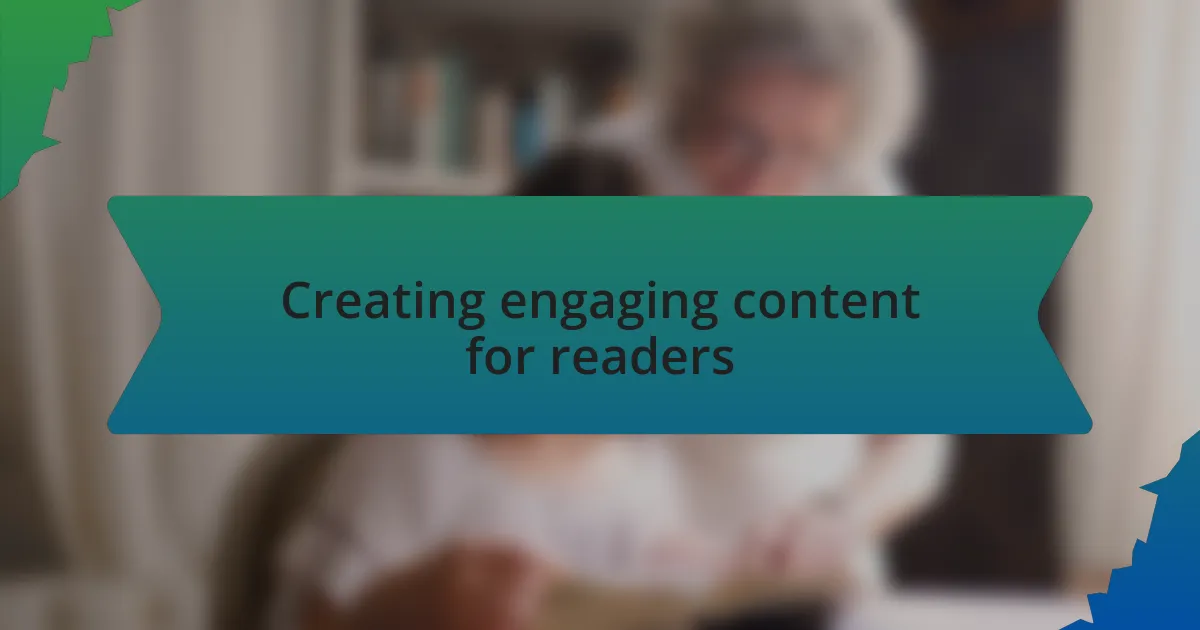
Creating engaging content for readers
Creating content that captivates your readers requires a mix of authenticity and relatability. I remember a time when I shared a personal story about overcoming writer’s block. The response was overwhelming; readers reached out, sharing their struggles and triumphs. It struck me that opening up about my challenges drew my audience closer. Have you considered how your own experiences could resonate with others?
Visual elements are another crucial component in engaging content. I began incorporating images and infographics into my blog posts, which helped break up the text and add visual appeal. Once, I created a simple graph that illustrated my writing journey, and it sparked fascinating discussions in the comments. It was a vivid reminder of how visuals not only enhance understanding but also invite dialogue. What tools or creative elements are you planning to explore?
Exploring topics that evoke emotions can deeply connect with readers. I often write about themes that matter to me—like the impact of community in my writing life—and I notice how people relate their own feelings to my words. One piece that particularly resonated described the joy of being part of a writer’s group. The feedback flowed like a river, showing me that tapping into shared emotional experiences truly enriches content. How do you plan to stir feelings through your own writing?
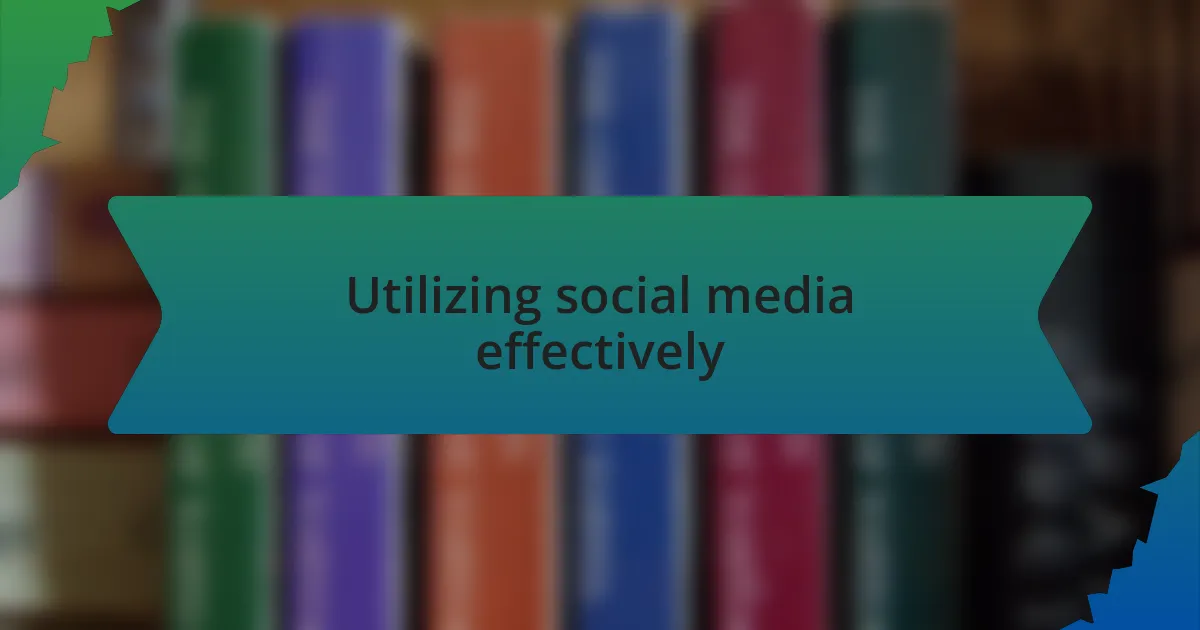
Utilizing social media effectively
Utilizing social media effectively is about creating authentic connections rather than just broadcasting your work. I remember the first time I engaged directly with my readers on Twitter, responding to their comments and questions. It felt like I was conversing with old friends, and the engagement skyrocketed. Have you thought about how a simple reply or a personal touch could transform your interactions?
To maximize your social media presence, consistency is key. I schedule my posts to maintain a regular presence, but I also make a point to share spontaneous thoughts that reflect my writing journey. I once posted about a last-minute inspiration that led to an entire chapter being reworked, and the variety in my content sparked lively conversations. How often do you share both planned and unplanned moments with your audience?
Don’t forget the power of collaboration. I collaborated with fellow authors for a group live-stream session once, discussing our writing experiences. It was exhilarating to hear different perspectives and see our audiences interact within a shared space. Have you considered how partnering with others could expand your reach and create a richer dialogue with both your followers and theirs?
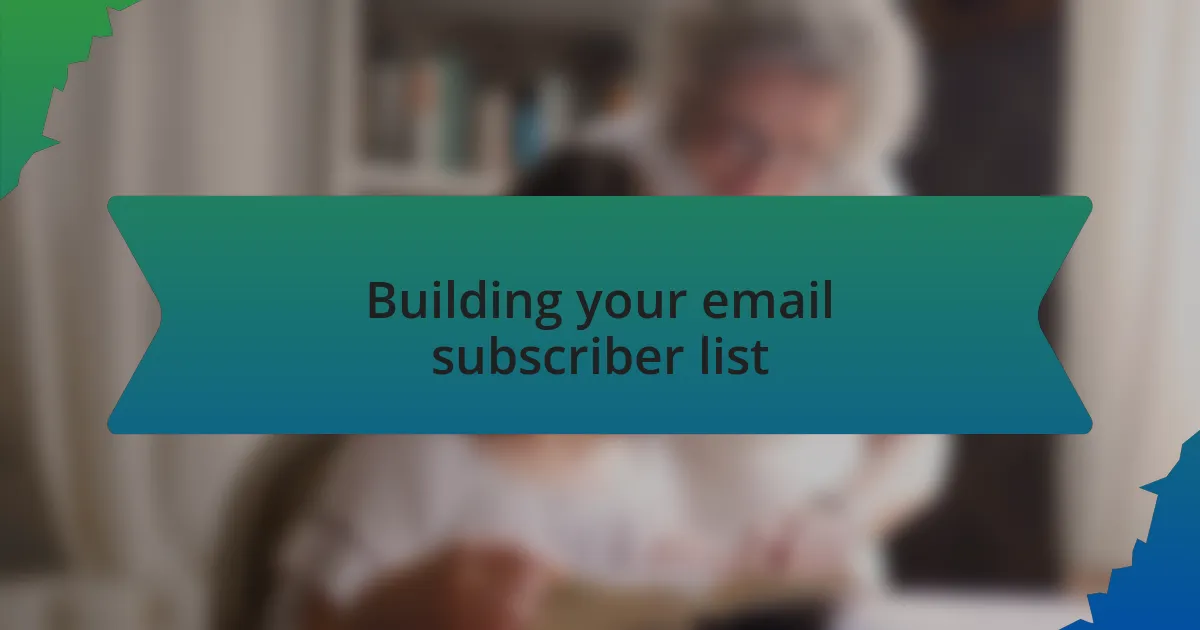
Building your email subscriber list
Building an email subscriber list is one of the most crucial steps I took in establishing my author platform. I started by offering a freebie—a short story exclusive to my subscribers. Not only did this entice readers to sign up, but it also allowed me to share my work in a meaningful way. Have you ever thought about what unique content you could offer your audience to encourage sign-ups?
To nurture my list, I send regular newsletters filled with writing updates, tips, and personal stories about my journey. I remember a particular issue when I shared my struggles with writer’s block and how I overcame it. The response was incredible, with many readers sharing their own experiences and telling me how relatable my story was. How might sharing your vulnerabilities strengthen your connection with your audience?
Lastly, I’ve found that optimizing my sign-up forms significantly boosted my list growth. Simple changes like placing the form on multiple pages of my website and ensuring it was visually appealing made a difference. I experimented with different call-to-action phrases and discovered that a casual tone worked best for my readers. What small tweaks could you make to make your sign-up process more inviting?